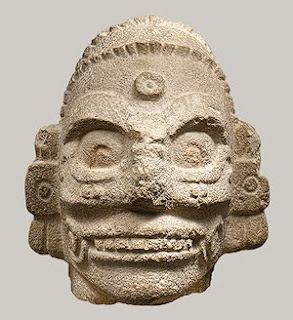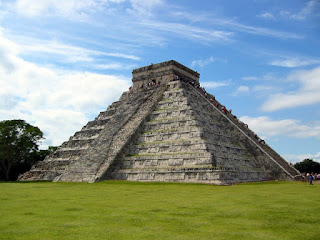
So, one of the starting point of this whole hysteria related to 2012 is the interpretation of a Maya profecy and of the Long Court Maya Calendar. Let us say some things about this people.
The ancient land of Mesoamerica, encompassing the entire Yucatan peninsula, was once home to the great Maya civilization. For years their rich culture remained shrouded in mystery—the wild Amazonian rain forest housing the culture and a violent colonial history probably pitched in their bits in further enhancing it. But with fresher discoveries of ancient archeological sites and scientific reinterpretations of their unique Calendar system, this image is fast changing. What is emerging is altogether different from the earlier Maya image, of a totally isolated and somewhat alien civilization, created by popular imagination. Its place has been taken by a far healthier attitude, which is eager to know, to learn about these amazing people and their culture.
What is good to know about this civilization is that it is noted for the only known fully developed written language of the pre-Columbian Americas, as well as its art, architecture, and mathematical and astronomical systems. Initially established during the Preclassic period (c. 2000 BC to 250 AD), many Maya cities reached their highest state development during the Classic period (c. 250 AD to 900 AD), and continued throughout the Postclassic period until the arrival of the Spanish. At its peak, it was one of the most densely populated and culturally dynamic societies in the world.

The geographic extent of the Maya civilization, known as the Maya area, extended throughout the southern Mexican states of Chiapas, Tabasco, and the Yucatán Peninsula states of Quintana Roo, Campeche and Yucatán. The Maya area also extended throughout the northern Central American region, including the present-day nations of Guatemala, Belize, El Salvador and western Honduras.
Like the Aztec and Inca who came to power later, the Maya believed in a cyclical nature of time. The rituals and ceremonies were very closely associated with celestial and terrestrial cycles which they observed and inscribed as separate calendars. The Maya priest had the job of interpreting these cycles and giving a prophetic outlook on the future or past based on the number relations of all their calendars. They also had to determine if the "heavens" or celestial matters were appropriate for performing certain religious ceremonies, like human sacrifice.



Niciun comentariu:
Trimiteți un comentariu